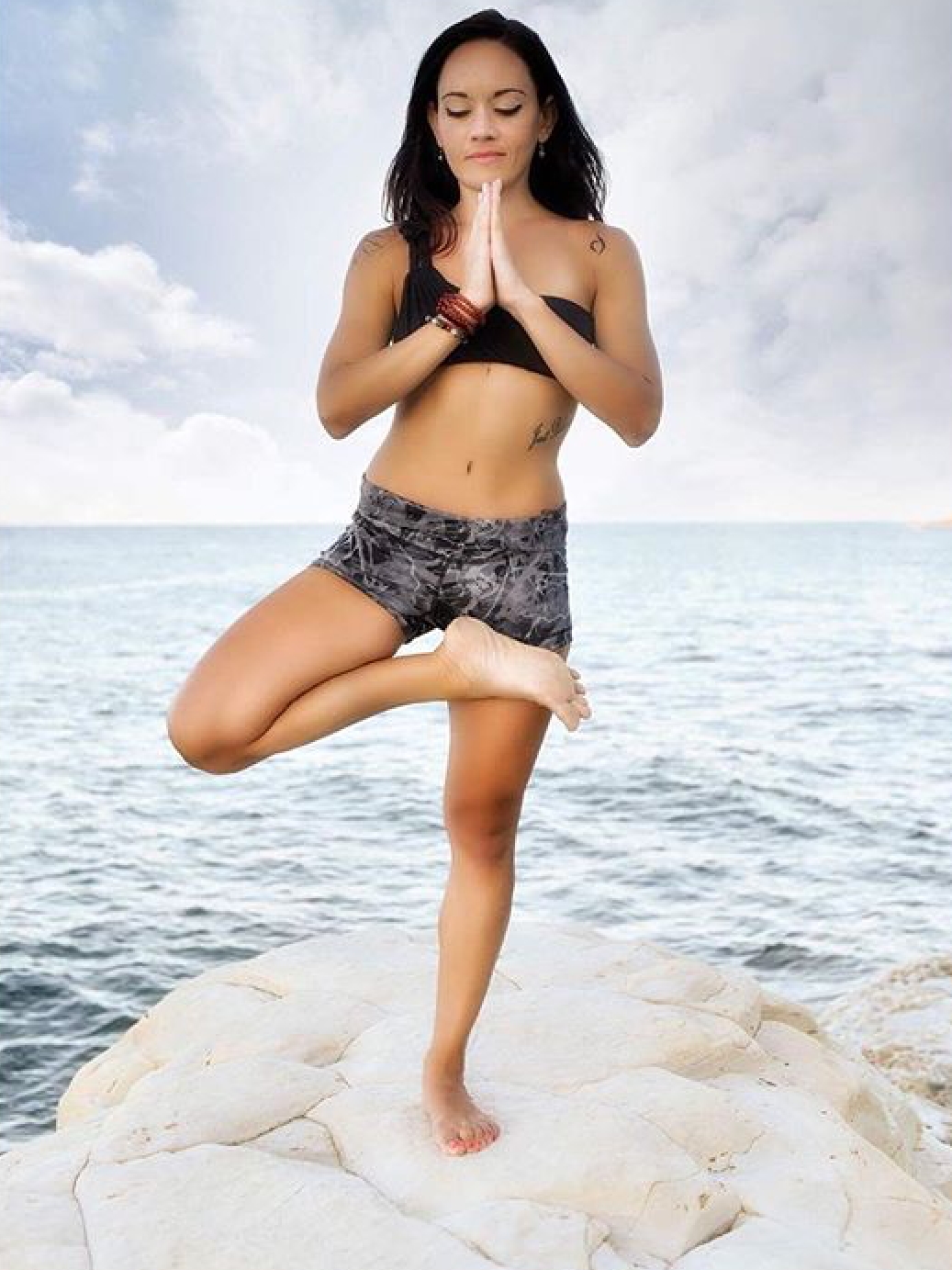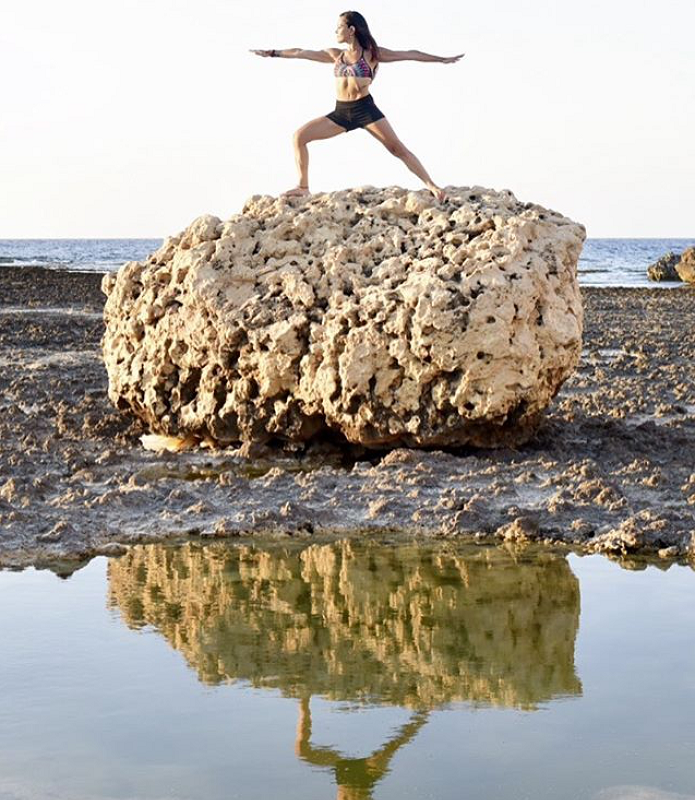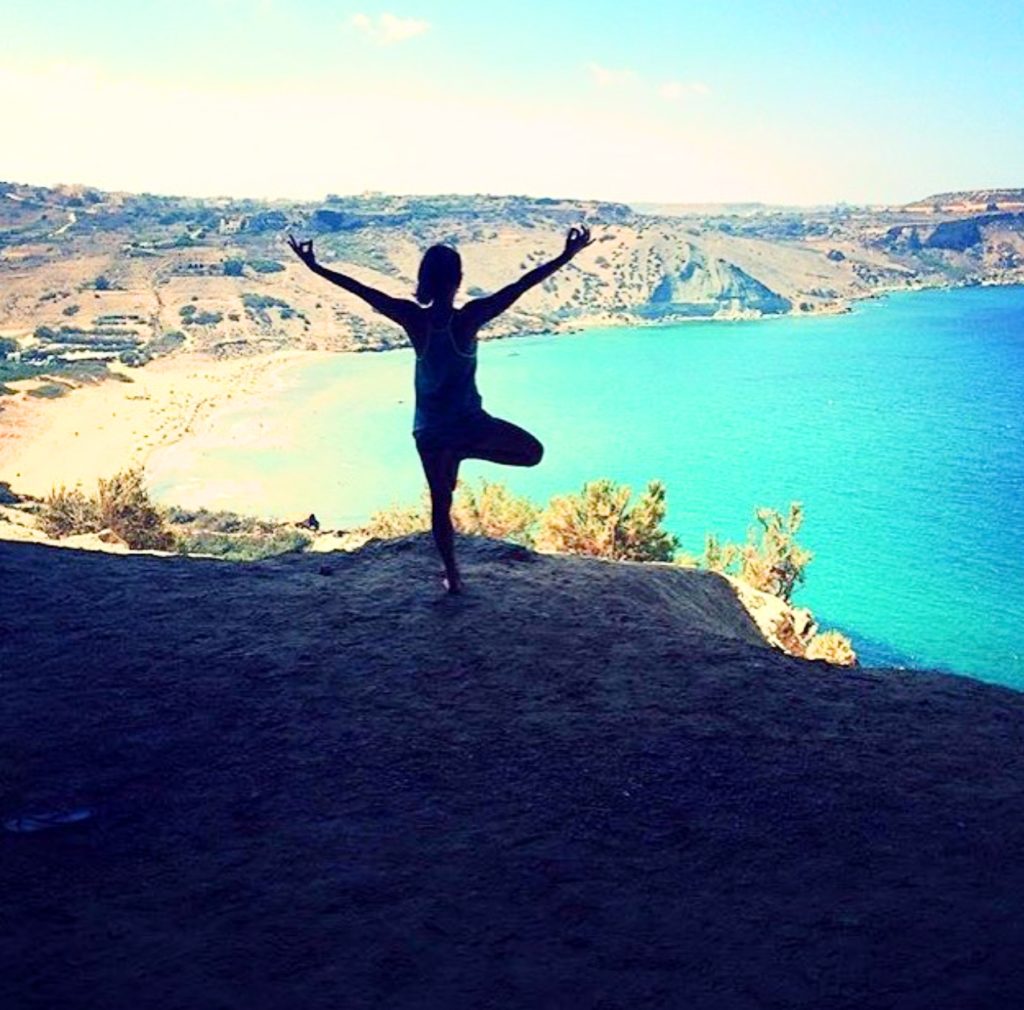The word yoga comes from the Sanskrit word yuj, which means to yoke or bind, and is often interpreted as “union” or a method of discipline. Yoga to me is the experience of the truth. The truth of what you are feeling, physically and emotionally. It’s your time to silence your surroundings and go within yourself to listen. Listen to your thoughts, your desires, your emotions, and your physical needs so you can create your own yoga practice.
When we practice yoga, we work intentionally to transfer stored energy in the body and mind to a state of balance through movement and breath.
[clickToTweet tweet=”When we practice #yoga, we transfer stored energy to a state of #balance” quote=”When we practice yoga, we work intentionally to transfer stored energy to a state of balance through movement and breath.”]
Many people have the impression that yoga must be done in a certain way, a certain flow, a certain class. Those are all good, but to know real yoga, to truly reap the full magical benefits is to make it your own. To make every flow you do different every time. To listen to your body and learn what it needs, what it craves at that very moment before your practice begins. This is your yoga, and it will rescue you every time.
The mat is our own personal island where any emotions we feel—joy, dread, exhilaration, confusion, despair, anger, happiness, anxiety— can all surface safely without judgment, without shame. It is a fabulous place for sweet release and surrender, which leads to healing.
Acknowledging the emotion and trying not to disregard it, enables learning and allows us to move forward. We should observe exactly what we’re feeling, “I feel angry, or I feel sad, or I feel emotional, and that’s OK, it will pass.” From there the emotions will dissolve and lose their control over you.
Even within the physical practice yoga is unique, because we connect the movement of the body, the emotions in our heart, and the thoughts in our mind to the rhythm of our breath. Connecting the mind, body, and breath helps us to direct our attention inward. Through this process, we learn to recognize our thought patterns, we become more aware of our body movements from moment to moment.
This is what makes yoga a practice, rather than a task or a goal to be completed. Yoga is never complete, there is no ending. You will always find a different area, emotionally and physically to focus on, challenge, heal, improve. It is not just the body that will become more flexible by doing yoga, the mind will too!
[clickToTweet tweet=”#Yoga is never complete. There is no ending.” quote=”Yoga is never complete. There is no ending.”]
Everyone knows that each time we practice we feel different on our yoga mat. Some days the asana is very easy, sometimes not. Some days we just cannot relax in a pose and sometimes we cannot balance at all, sometimes we flow like in a rhythmic dance, yet sometimes we just want to hold a pose forever. This is all the effect of the emotions and our state of mind.
Though most classes go on for an hour or an hour and a half each time, forget that when you’re first starting out. To get the best start to creating your own yoga practice I suggest starting at your own pace. Give what you feel you can give. That could mean two or three times a week or every day. It could mean an hour for every practice, 30 or 20 minutes. Experiment! Test it out and do what makes you feel light! If it feels heavy then you haven’t found the right balance for yourself yet.
Don’t let time constraints or unrealistic goals be an obstacle, do what you can and don’t worry about it. Getting on that mat is the main goal and it will change your life if you are consistent. So, if consistency means less than an hour, just add it into your life and watch and feel the shift take place. You may even practice two short sessions. I have done a 10 minute flow in the morning to wake up and get warmed up before my workout, and then a 10 to 20 minute flow in the evening. Why? Because I have learnt to listen to my body and I can physically and mentally feel when my body needs to flow in the evening to release and balance the energy I have accumulated through the day.
The most important thing to do is just start. Here are the 3 steps I run through before I start every practice.
1. Acknowledge what you are feeling, physically and emotionally. From this you will notice the type of flow you need. You can step up the pace and sweat out your anxiety or you can simply hold Child’s pose the entire practice while you let your tears flow. THERE IS NO WRONG FLOW. If it works for you it was exactly what you needed.
2. Choose the genre of music according to your mood. Example, if I feel like I need to release pent up energy I pick pop or rock. If I feel like I need to release some stress and bring peace back into my spirit, my first choice would be nature music, the ocean always puts me at ease. Again, this is completely your call.
3. Set your practice area according to your mood! Is it a morning flow where you want to refresh and energize? Then let that sunlight in! Open those curtains, lift those blinds! Or maybe it is the end of the day and you just want to mellow out and prepare yourself for a good night’s sleep? Then why not light some candles, put all lights off and just BE.
With all that being said, remember, once you match your emotions with your flow, that’s when you experience the full benefit of your own yoga practice.






